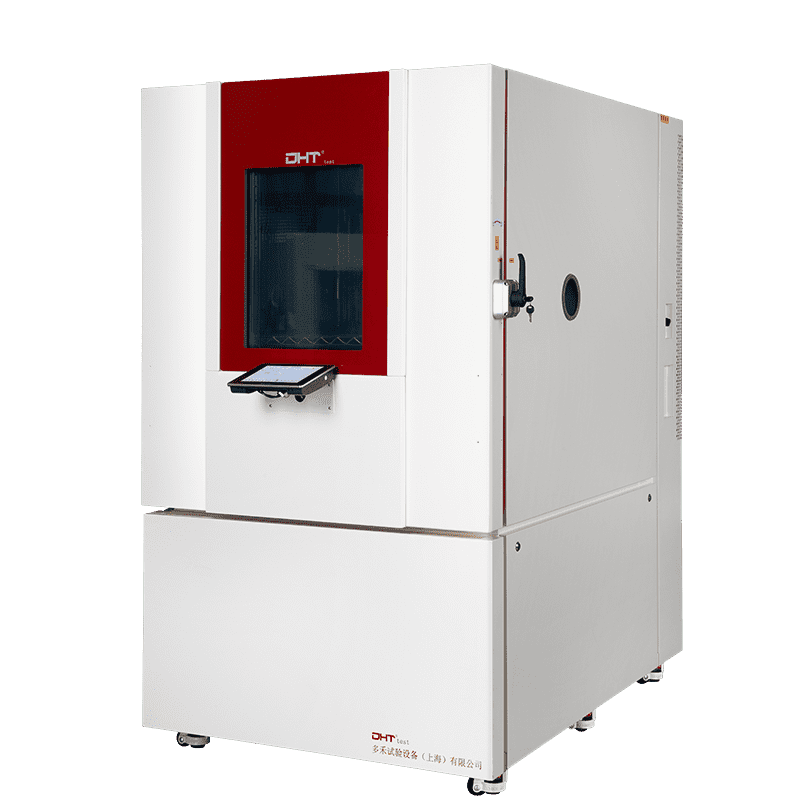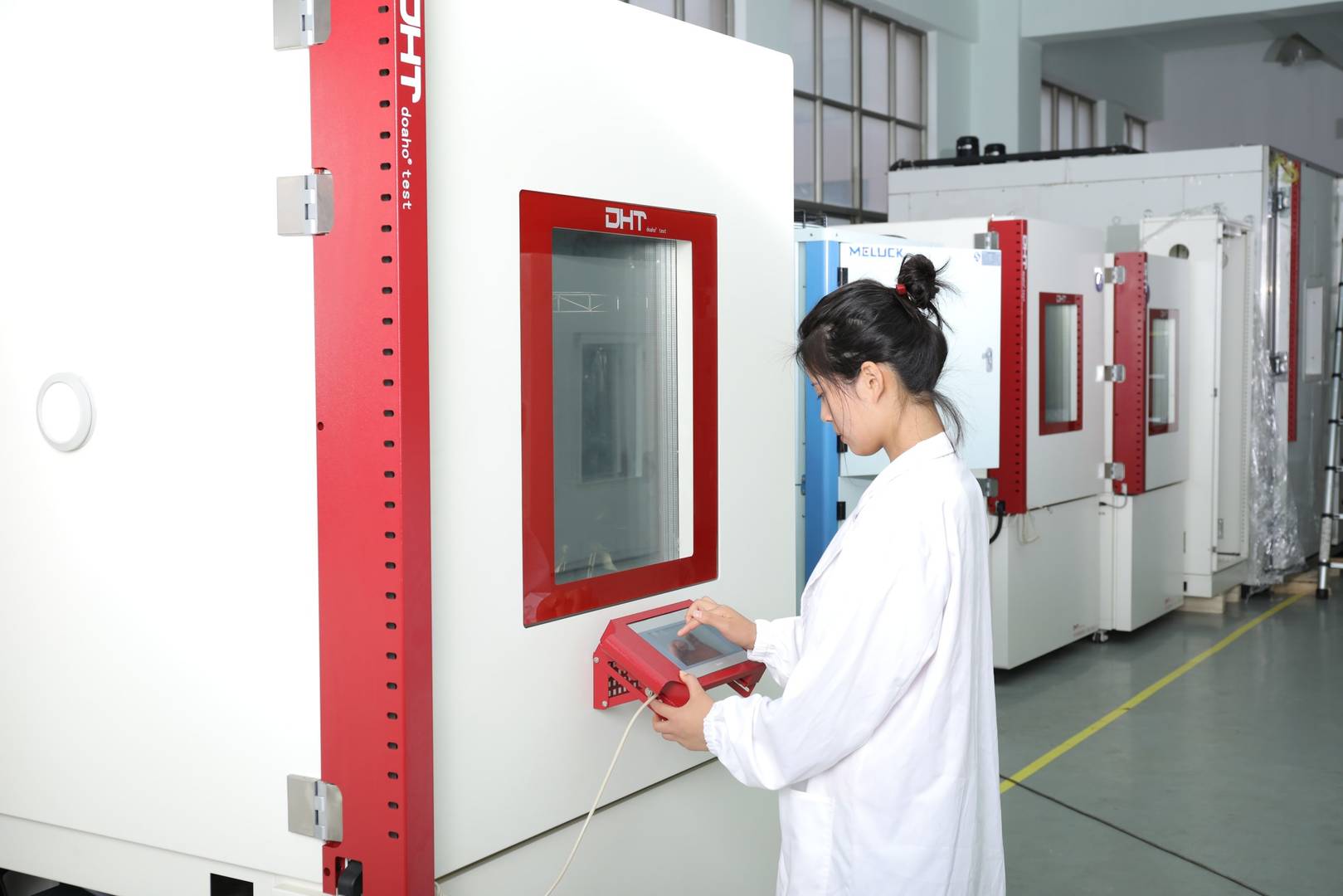Written by Dorothy
Senior Sales Manager, Doaho Test (DHT®)
What Is a Constant Temperature and Humidity Chamber?
A constant temperature and humidity test chamber is a vital environmental simulation device used to verify the reliability and stability of products under specific temperature and humidity conditions. More than just a testing instrument, it is an essential quality assurance tool widely applied across electronics, automotive, aerospace, new energy, defense, materials, and biomedical industries. It helps enhance product quality, boost brand credibility, and reduce market risks.
However, the market offers a dizzying variety of models with large price gaps and widely varying specifications. For many engineers and procurement professionals, selecting a chamber that truly meets technical needs while offering reliable performance and after-sales support can be a major challenge.
This article offers a practical procurement guide—from core selection criteria and technical parameters to supplier evaluation and after-sales support—to help you avoid common pitfalls and make an informed decision.
Clearly Define Your Testing Needs
Before purchasing a chamber, the most important step is clarifying your specific testing requirements, including:
-
Temperature and Humidity Range: Choose based on actual testing needs—not the “bigger, the better” myth. Common ranges include -20°C to +150°C, -40°C to +150°C, and -70°C to +150°C. Confirm whether the advertised range refers to stable and uniform conditions, not just peak extremes achievable by overloading the compressor or heater. Pay special attention to the effective humidity range! For example, 20%–98% RH can typically only be achieved between 25°C and 80°C. Outside of this range, humidity control can significantly decline or fail. Always request a humidity performance chart from the supplier.
-
Chamber Volume: Match the test chamber size to your sample dimensions and quantity, leaving adequate spacing. Oversized chambers unnecessarily raise costs. Avoid crowding, as it disrupts airflow and undermines uniformity and stability, making results unreliable.
-
Temperature Change Rate: If fast ramp rates like 3°C/min or 5°C/min are needed, this affects both configuration and price. Be sure to distinguish:
-
Linear Rate: A true, consistent ramp across the full temperature range (e.g., -40°C to +85°C at 5°C/min).
-
Average Rate: Total temperature difference divided by total time, ignoring actual fluctuations—often faster on paper but inferior in real performance.
-
-
Compliance with Industry Standards: Standards such as IEC, MIL-STD, and GB define strict criteria for accuracy, stability, and uniformity. Discuss testing conditions in detail with technical engineers to ensure the selected chamber meets your testing protocol.
Understand Core Technical Parameters to Avoid “Spec Traps”
Some manufacturers exaggerate performance or omit critical specs. Key areas to verify include:
-
Control Precision & Stability
-
High-quality equipment typically delivers ≤±0.5°C temperature fluctuation and ≤±2.5%RH humidity fluctuation.
-
These directly affect test repeatability and reliability.
-
-
Control System
-
Choose chambers with proprietary or industrial-grade embedded controllers (e.g., PLC + touchscreen). Look for features like remote monitoring, programmable cycles, and power failure recovery.
-
-
Dehumidification Method
-
Two main types: condensation-based and desiccant-based.
-
For <10%RH humidity control, dual dehumidification or dry gas injection systems are recommended.
-
-
Material and Sealing
-
Interior: SUS304 stainless steel; Exterior: powder-coated cold-rolled steel or stainless steel.
-
Door seals and locking systems should prevent heat/moisture leakage.
-
Don’t Overvalue Price—Focus on Performance, Not Hype
Price can vary widely—from tens of thousands to hundreds of thousands of RMB or USD—based on performance and build quality. Influencing factors include:
-
Control Logic: Basic PID vs. advanced programmable systems.
-
Refrigeration System: Imported compressors (e.g., Danfoss, Bitzer) cost more but offer longer life and greater reliability.
-
Craftsmanship: Elements like airflow ducting, insulation, and structural integrity are less visible but critical to performance.
Compare pricing only after ensuring comparable performance. Be wary of suppliers who lure you with a low base price only to upcharge later for essential configurations.
Choose the Right Supplier
-
Credentials & Capabilities
-
Experience & Reputation: Ask for case studies in your industry (electronics, automotive, defense). Contributions to national/industry standards are a bonus.
-
R&D and Manufacturing: Can they independently develop core technologies, or are they merely assembling imported parts?
-
Certifications: ISO 9001 is a minimum. CE/UL/ETL marks—though not always mandatory—reflect a commitment to quality.
-
-
Technical Transparency
-
Detailed Configuration Lists: Insist on documentation detailing brands, models, and specs of critical components (compressors, controllers, sensors, valves, insulation, sheet metal thickness, etc.).
-
Technical Response: Can the supplier clearly explain how their system meets your requirements—and commit in writing?
-
-
Price Evaluation
-
Apples-to-Apples Comparison: Once you have consistent specs, compare pricing across vendors. A difference >20% warrants investigation—often a sign of cut corners on components or service.
-
Total Cost of Ownership: Factor in energy efficiency, maintenance, parts availability, and downtime risk. “Cheap” upfront often means “expensive” in the long run.
-
After-Sales Support: The Key to Long-Term Reliability
-
Warranty Terms
-
Clearly defined and contractually binding.
-
Typical: 1–3 years for the whole system; extended warranty for compressors or core components is a plus.
-
Specify coverage scope (e.g., sensors, heaters, controller, compressor, etc.), exclusions, and whether labor/travel costs are included.
-
-
Service Responsiveness
-
Define response times: e.g., ≤24 hours for remote support, ≤48/72 hours for on-site.
-
Ensure 24/7 phone or remote technical support is available.
-
Are engineers factory-trained and capable of resolving complex issues?
-
-
Spare Parts Availability
-
Check inventory and lead times for both standard and critical parts.
-
Confirm post-obsolescence parts support duration and cost transparency.
-
-
Training
-
Look for comprehensive, free training on system operation, programming, and maintenance—ensuring safe and correct use.
-
-
Maintainability (Check Before You Buy)
-
Inspect demo units or schematics to ensure:
-
Clear wiring and modular design;
-
Accessible compressors, valves, and sensors;
-
Sufficient service space inside.
-
-
Conclusion
A constant temperature and humidity chamber is a core testing asset with long-term implications for product development and quality control. Successful procurement requires a well-rounded evaluation of technical specs, application fit, supplier qualifications, and after-sales support—rather than focusing on price or over-specification.
We hope this guide helps you navigate the market wisely, avoid costly mistakes, and select the chamber that truly suits your needs.


